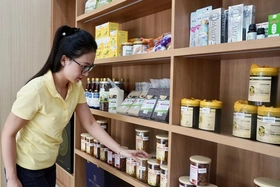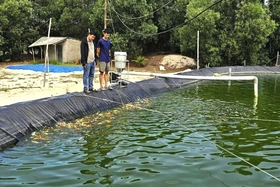4buaIFRSJjjhu6plZU9RY8OJMMOpODtR4bucROG6ueG7qmEiUsOJxJEwUiDDoTg/ZVJlw6nEkeG7qsOpOyIwJlLDoWNjw6HEkcOp4bq5YTDDqTA7ZVJdw6HEkVJl4bq5ZcOp4buqMGHhu6oqODtSPztpOzjDoWM5O2HDqeG7mi8gVOG7nOG7mmNSJjjhu6plZU9RY+G7rTvhu6o/UeG7nOG7r2FSw6k7xJE5ZVLDoV1SIjvDoSLEkeG7qmMgMCZS4buqYT9SOybDoWHDoTkwJlJjw6FlMMOpMMOhYeG7klJE4bq54buqYSJSw4nEkTBSY8SRw6FpMGEmO1IwZVJlw6nEkeG7qsOpOyIwJuG7qjg44buLUjjDoSbhu6rDqTs/UsOtMMOpIDBhUsOpw63DoVJh4buqw6kww6Fh4buqOFI/O2k7OMOhYzk7YcOpUibDocSRxJEwP8OhxJFlw5RSw6kgO1Jy4buqZcOpLcONO2XDqVJyJsOhYcOhOTAmUuG7ocOhxJHEkTA/w6HEkVLhu6phP1LDqSA7UuG7tTvhu4tScibDoWHDoTkwJlJaw6FhO1IwYVLDqSA7UuG7oTthw6nEkeG7qjhSxJA7IjDDoWHhu5JSw60ww6kgUjc74buLUj87aTs4w6FjOTthw6lSYzA4OOG7qsSRZVIwYSY44bq5PzBhIlLDqSA7UkXDoeG6ucOpIDvhu6plw6lSROG6ueG7qmEiUsOJxJEwUnImw6Fhw6E5MCZSWsOhYTtS4buqYT9Sw6kgO1Lhu7fhu6rDoVLhu5/hu6rDoVJFYzsmMOG7qjhS4buhw6E5OTvEkSYw4buqOFJyJsOhYcOhOTAmUlrDoWE74buYUkHDocOp4buqKjjhu4vhu5JSMMOpUiDDoWXDqWVSw6nDrcOhUjBhw6k7xJFh4buqw6kww6Fh4buqOFIqw6HEkT87xJFSIuG7qsOpO2Xhu5JS4bu34buqw6FS4buf4buqw6FS4buqYT9S4bu34buqUuG7t+G7quG7i+G7mFJtPz8ww6kww6Fh4buqODjhu4vhu5JSROG6ueG7qmEiUsOJxJEwUirDoeG7qmXDqWVSw6kgO1Lhu6Hhurnhu6pSSTA7w6lS4buqYT9S4bu54buLUsOJIOG6ueG7i1JlO+G7qmPDocSRw6ll4buSUmU7xJFpMGEiUuG7qmVSIuG7qsOpO8Ot4buq4buLZVLDqcOhUsOpIDtScuG7qmXDqVJFO+G7qlLhu6phP1JpMMOp4buqOFI4MGE3ZVLDqcOhUsOpIDtSQ+G7qiYwXTAmUsOBJjvhu6phUuG7qmE/UsOpIDtS4buvYT8w4buqYVLDgSY74buqYeG7mFLDiSAwZVJlw6nEkeG7qsOpOyIwJlJjw6FlMMOpMMOhYTBhIuG7klImw6FhYTsmw6kwYSJSw6kgO1I74buqZcOpO8SRYVLhu6phP1LDrTtlw6k7xJFhUsSROyIww6FhZeG7klJjxJE7ZTthw6llUmUwImEwXTAm4buqYcOpUsOhY2PDocSRw6nhurlhMMOpMDtlUl3DocSRUsSR4buqYzA/UuG7qmE/UmXhurllw6nhu6owYeG7qio4O1I/O2k7OMOhYzk7YcOpUjBhUkThurnhu6phIlLDicSRMOG7mOG7mi9j4buc4buaY1ImOOG7qmVlT1Fj4bufw6E/4buLUeG7nOG7mjA5IlImOOG7qmVlT1Ew4buhO2HDqTvEkVFSZcSRJk9RIMOpw6ljZcOULy8m4buYKuG7qsOhZOG6ueG7qmEiw6nEkTDhu5hpYS8/O2U3w6nDoWMvYTvDrWUvVcOZVFUvVFTDmT9TVOG7qFRTVeG7qMOpVFThu6jhu6g44buoLTcg4buqVVVUVC1U4buYw607KmNRUuG7qjjDqU9RROG6ueG7qmEiUsOJxJEwUiDDoTg/ZVJlw6nEkeG7qsOpOyIwJlLDoWNjw6HEkcOp4bq5YTDDqTA7ZVJdw6HEkVJl4bq5ZcOp4buqMGHhu6oqODtSPztpOzjDoWM5O2HDqVFSL+G7nOG7mi9j4buc4buaY1ImOOG7qmVlT1Fj4buh4buqY8OpMMOhYVHhu5xtYVLhurljIsSR4buqPztSw6FdUuG7oeG6ueG7qlJJMDvDqVJjw6HEkcOpUsOtw6Hhurk4P1JlO8SRaTtS4buqZVLDqSA7UsOpxJHhu6phZWUgMGM5O2HDqVIg4bq5KlJdw6HEkVImw6Hhurlhw6nEkTA7ZVLDoWFSw6kgO1Jy4buqZcOpLcONO2XDqVJyJsOhYcOhOTAmUuG7ocOhxJHEkTA/w6HEkeG7mFJDIMOhw6nDocOUUuG7reG7mEHhu5jhu7Xhu5ovY+G7nOG7mmNSJjjhu6plZU9RY+G7n8OhP+G7i1Hhu5zhu5plw6nEkcOhYSLhu5xtP2nhu6phw6nhu6oiO2VSw6FdUsOpIDtSO+G7qmXDqTvEkWFSZTA/O+G7mi9lw6nEkcOhYSLhu5zhu5ovY+G7nOG7mmNSJjjhu6plZU9RY+G7n8OhP+G7i1Hhu5zhu7fDoSbhu6rDqTs/UsOhYVLDqSA7Ujvhu6plw6k7xJFhUmUwPztSw6FdUkThurnhu6phIlLDicSRMFJjxJHDoWkwYSY74buSUsOtIDAmIFIqw6HEkT87xJFlUsOpIDtScuG7qmXDqVJFO+G7qlLDrTDDqSBS4buqUibDoeG7qmXDqTgwYTtSZcOpxJE7w6kmIDBhIlLFqOG7pFI3MDjDoTk7w6k7xJFl4buSUjDDqVJdO+G7qsOp4bq5xJE7ZVLDqcOtw6FSOeG7qjbDocSRUsSRMGk7xJFSOcOh4bq5w6kgZeG7klLhu6Hhurnhu6pSw4nhurlhIlLhu6phP1Lhu6Hhurnhu6pSSTA7w6nhu5hSw4kgO1I54buqxJEwYTtSOybDoWXhu4tlw6k7OVIwZVLEkTAmIOG7klLDrTDDqSBSaeG7qmXDqVJdMGUgMGEiUiLEkcOh4bq5YT9lUuG7qmE/UuG7qirhurlhP+G7qmHDqVLhu6pk4bq54buqw6kwJlLEkTtlw6HhurnEkSY7ZVLDoV1SIDAiIFI7JsOhYcOhOTAmUmnhu6o44bq5O+G7mFJE4bq54buqYSJSw4nEkTDigJllUibDoeG7qmXDqTgwYTtSKsOh4buqZcOpZVIqO+G7quG6ucOpMF3hurk4Uio74buqJiA7ZVJl4bq5JiBS4buqZVLhu6Hhurnhu6pSw4nhurlhIuG7klLhu6Hhurnhu6pSSTA7w6nhu5JS4buqYT9S4bu54buLUsOJIOG6ueG7i+G7klJjxJHDoWkwPzBhIlJd4buqacOhxJHhu6oqODtSJsOhYT8ww6kww6FhZVJdw6HEkVLDqcOh4bq5xJEwZTlSPztpOzjDoWM5O2HDqeG7mOG7mi9j4buc4buaY1ImOOG7qmVlT1Fj4bufw6E/4buLUeG7nG0/PzDDqTDDoWHhu6o4OOG7i+G7klLDqSA7UuG7qirhurlhP+G7qmHDqVJjw6HDqTthw6kw4buqOFLDoV1S4buhw6FhUuG7ocOhUuG7r2U44buqYT9Sw6FdXTvEkWVSw6FjY8OhxJHDqeG6uWEww6kwO2VSXcOhxJFSw6kgO1I/O2k7OMOhYzk7YcOpUsOhXVI54buqxJEwYTtS4buqYT9SMGU44buqYT9Sw6nDoeG6ucSRMGU54buYUsOJIDtSPzBlJsOhaTvEkeG7i1LDoV1SIuG7qmVSxJE7ZTvEkWk7ZVIwYVIqOMOhJjdlUlRUVVLhu6phP1JUVMOa4buSUuG7qmNjxJHDocOsMDnhu6rDqTs44buLUlTDmlNSNzA4w6E5O8OpO8SRZVLDoV1dUsOpIDtSJsOh4buqZcOpUsOhXVJE4bq54buqYSJSw4nEkTDhu5JSY8SRO2U7YcOpZVLhu6phUsOhY2PDocSRw6nhurlhMMOp4buLUl3DocSRUsOpIDtSPztpOzjDoWM5O2HDqVLDoV1SO2E7xJEi4buLUjBhP+G6uWXDqcSRMDtl4buY4buaL2Phu5zhu5pjUiY44buqZWVPUWPhu5/DoT/hu4tR4buc4bu5w6HEkTvDoWk7xJHhu5JSw6kgO1I7ZcOp4buqKjgwZSA5O2HDqVLDoV1Sw6kgO1JFw6HhurnDqSA74buqZcOpUkThurnhu6phIlLDicSRMFJyJsOhYcOhOTAmUlrDoWE74buSUuG7qlI54bq5OMOpMC1lOybDqcOhxJFSPztpOzjDoWM5O2HDqVLhu6rEkTvhu6rhu5JSMGVSO8OsYzsmw6k7P1LDqcOhUio7UuG7qlIqxJE74buqN8OpIMSRw6HhurkiIFIwYVLDqSA7Ujsmw6Fhw6E54buL4buSUl3DocSROTBhIlLhu6pSOeG7qjbDocSRUiDhurkqUl3DocSRUuG7qiLEkcOhLV3DocSRO2XDqcSR4buLLV0wZSA7xJEwO2VSY8SRw6EmO2VlMGEiUjBhP+G6uWXDqcSRMDtl4buSUibDoWFlw6nEkeG6uSbDqTDDoWFSOeG7qsOpO8SRMOG7qjhSY8SRw6E/4bq5JsOpMMOhYeG7klI7YTvEkSLhu4vhu5JSw6nDoeG6ucSRMGU54buSUibDoTk5O8SRJjvhu5JSZTvEkWkwJjtl4buSUuG7qmE/UsOpIDtSZTvhu6pjw6HEkcOpUjBhUsOpIDtS4buhO2HDqcSR4buqOFLEkTsiMMOhYeG7mOG7mi9j4buc4buaY1ImOOG7qmVlT1Fj4bufw6E/4buLUeG7nMOJIDBlUuG7qjA5ZVLDqcOhUjnhu6o3O1LDqSA7UkXDoeG6ucOpIDvhu6plw6lSROG6ueG7qmEiUsOJxJEwUnImw6Fhw6E5MCZSWsOhYTtSw6FhO1LDoV1Sw6kgO1LDqcSR4buqPzBhIlImO2HDqTvEkWVSw6FdUsOpIDtSbUVybUFS4buqYT9SbWUw4buqLUPhu6omMF0wJlLEkTsiMMOhYWXhu5JSP8SRMGkwYSJSOybDoWHDoTkwJlLhu6phP1Jlw6EmMOG7qjhSPztpOzjDoWM5O2HDqVLhu6phP1I7YSDhu6phJjBhIlJE4bq54buqYSJSw4nEkTBSY8SRw6FpMGEmO+KAmWVSY8OhZTDDqTDDoWFSMGFSw6kgO1JBw6HEkcOpIFLhu6E7YcOpxJHhu6o4UsSROyIww6Fh4buY4buaL2Phu5zhu5pjUiY44buqZWVPUWPhu5/DoT/hu4tR4bucQ8SRO2U7YcOpOOG7i+G7klLDqSA7UuG7ueG7i1LDiSDhurnhu4tSZTvhu6pjw6HEkcOpUmPEkcOhNjsmw6nhu5JSODs/Uirhu4tSw6kgO1Lhu7nhu4tSw4kg4bq54buLUuG7r2HDqTvEkWHhu6rDqTDDoWHhu6o4UkPDocSRw6lS4buzw6EwYcOpUkXDqcOhJjdS4buhw6E5Y+G7qmHhu4tS4buW4bu5w4nhu69DxqDhu5JSw60ww6kgUuG7qlLDqcOhw6nhu6o4UjBhaTtlw6k5O2HDqVLDoV1SSUFwVMOZ4buYVVLDqcSRMDg4MMOhYVLhu5bhurhFw5Phu6ZUVVI5MDg4MMOhYcagUsOhaTvEkVLhu6RTUuG7izvhu6rEkWXhu5JSIOG7qmVSxJE7ZeG6uTk7P1Lhu6pdw6k7xJFS4buqUmM7xJEww6E/UsOhXVIwYcOpO8SRxJHhurljw6kww6FhUj/hurk7UsOpw6FSOOG7qmE/UiY4O+G7qsSR4buqYSY7UjBlZeG6uTtlUuG7qmE/UsOhw6kgO8SRUsSROzjhu6rDqTs/UmPEkcOhJjs/4bq5xJE7ZVIwYVLDqSA7Ul0wxJFlw6lSZOG6ueG7qsSRw6k7xJFSw6FdUlVTVcOZ4buSUsOtMMOpIFImw6FhZcOpxJHhurkmw6kww6FhUmUmIDs/4bq5ODs/UsOpw6FSJsOhOTk7YSY7Uirhu4tSw6kgO1I7YT9Sw6FdUuG7ueG7qsSRJiBSVVNVw5nhu5jhu5ovY+G7nOG7mmNSJjjhu6plZU9RY+G7n8OhP+G7i1Hhu5zDiSAwZVLDoWNjw6HEkcOp4bq5YTtSw6kwOTtSXcOhxJFSMDljODs5O2HDqeG7qsOpMMOhYVImw6EwYSYwPztlUsOtMMOpIFLDqSA7UibDoTljODvDqTDDoWFSw6FdUsOpOyYgYTAm4buqOFIwYV3EkeG7qmXDqcSR4bq5JsOp4bq5xJE7Ul3DocSRUsOpIDtSPztpOzjDoWM5O2HDqVLDoV1S4bu54buLUsOJIOG6ueG7i1JlO+G7qmPDocSRw6nhu5hS4buvw6lSxJE7Y8SRO2U7YcOpZVLhu6pSJsOhYWE7JsOpMMOhYVJjw6EwYcOpUl3DocSRUsSROyIww6Fh4buqOFI/O2k7OMOhYzk7YcOp4buSUsOtMMOpIFIwYWk7ZcOpOTthw6llUjBhUsOpxJHhu6phZWPDocSRw6nhu6rDqTDDoWFSMGFdxJHhu6plw6nEkeG6uSbDqeG6ucSRO1Lhu6phP1Lhu6owxJFjw6HEkcOpZVLDqcOhUj87aTs4w6FjUjjDoSIwZcOpMCZl4buYUsOJIDvEkTtdw6HEkTvhu5JSJsOhYWXDqcSR4bq5JsOpMGEiUsOpIDtSPzs7Yy3DreG7qsOpO8SRUmPDocSRw6lSw6FdUuG7ueG7i1LDiSDhurnhu4tSMGVSJsSR4bq5JjDhu6o44buSUsOhYzthMGEiUuG6uWNS4buqJiY7ZWVSw6nDoVLDqSA7UnLhu6plw6lSRTvhu6pS4buqYT9SXcOhZcOpO8SRMGEiUjsmw6Fhw6E5MCZSIsSRw6HDrcOpIFJdw6HEkVLDqSA7UmPEkcOhaTBhJjtS4buqOTA/UiI4w6Eq4buqOFIwYcOpOyLEkeG7qsOpMMOhYVLhu6phP1I/O2k7OMOhYzk7YcOpUsOpxJE7YT9l4buY4buaL2Phu5zhu5pjUiY44buqZWVPUWPhu5/DoT/hu4tR4bucxJA7IuG7qsSRPzBhIlLDqSA7UuG7oeG6ueG7qlJJMDvDqVJjw6HEkcOp4buSUibhurnEkcSRO2HDqTjhu4tSZWPhu6phYTBhIlLhu6phUuG7qsSRO+G7qlLDoV1Sw5lV4buSU1NTUmVk4bq54buqxJE7Ujk7w6k7xJFl4buSUsOtMMOpIFLhu6pSZcOpw6HEkeG7qiI7UuG7i+G7qsSRP1LDoV1Sxajhu5JVU1NSZWThurnhu6rEkTtSOTvDqTvEkWVS4buqYT9S4buqUiDhu6phPzgwYSJSJuG7qmPhu6omMMOp4buLUsOhXVJVUjkwODgww6FhUsOpw6FhZVLDoV1SIsOhw6E/ZVJjO8SRUuG7izvhu6rEkeG7klIww6lSJuG7qmFS4buqJibDoTk5w6E/4buqw6k7Umk7ZWU7OGVSw60ww6kgUuG7qlJj4buq4buLOMOh4buqP1LDoV1SVOG7klNTU1Jww43DieG7mFLDiSA7UuG7oeG6ueG7qlJJMDvDqVLDoTA4Uj87Y8Ohw6lSw6EmJuG6uWMwO2VSVFRSIDsmw6nhu6rEkTtlUsOhXVI44buqYT/hu5JSw60ww6kgUuG7qlJlw6nDocSR4buqIjtSJuG7qmPhu6omMMOp4buLUsOhXVLDmeG7pOG7klNTU1Im4bq5KjAmUjk7w6k7xJFl4buSUuG7qmE/UuG7qlJlYzsmMOG7qjgwejs/UsOhMDhSMDljw6HEkcOpUj/DoSY3Uibhu6pj4buqKjg7UsOhXVLEkTsmOzBpMGEiUmk7ZWU7OGVS4bq5Y1LDqcOhUsOZU+G7klNTU1Jww43DieG7klLhu6omJsOhOTnDoT/hu6rDqTBhIlLDqSA7Ujjhu6rEkSI7ZcOpUmk7ZWU7OGVS4bq5Y1LDqcOhUuG7pFPhu5JTU1NSJuG6uSowJlI5O8OpO8SRZeG7mFLDiSA7UmPEkcOhaTBhJjtSIOG7qmVS4buqOGXDoVLhu6pjY8SRw6FpOz9S4buqUmPEkcOhNjsmw6lSw6nDoVIwYWk7ZcOpUjBhUsOpOyYgYTAm4buqOFIwYV3EkeG7qmXDqcSR4bq5JsOp4bq5xJE7UuG7qmE/UjvDrGPhu6phP1LDqSA7UuG7oeG6ueG7qlJJMDvDqVJjw6HEkcOpUsOtMMOpIFLhu6pSw6nDocOp4buqOFIwYWk7ZcOpOTthw6lSw6FdUsOhaTvEkVJJQXDGr1NSKjA4ODDDoWFS4buWw5PDmuG7mFVSOTA4ODDDoWHGoFLDqcOhUjk7O8OpUl3hurnDqeG6ucSRO1Im4buqxJEiw6FSw6nEkeG7qmFlZSAwYzk7YcOpUmE7Oz9l4buY4buaL2Phu5zhu5pjUiY44buqZWVPUWPhu5/DoT/hu4tR4bucw4kgO1Imw6Hhu6plw6nhu6o4UuG7qsSRO+G7qlLDoV1Sw6kgO1JjxJHDoWkwYSY7UiDDoTg/ZVJlMCJhMF0wJuG7qmHDqVIwOWPDocSRw6nhu6phJjvhu5JSY8SRw6FpMD8wYSJSXeG7qmnDocSR4buqKjg7UibDoWE/MMOpMMOhYWVSXcOhxJFSZcOhJjDDoS07JsOhYcOhOTAmUj87aTs4w6FjOTthw6nhu5JSMGEmOOG6uT8wYSJSw6kgO1JFw6HhurnDqSA74buqZcOpUkThurnhu6phIlLDicSRMFJyJsOhYcOhOTAmUlrDoWE7UuG7qmE/UsOpIDtSJsOh4buqZcOp4buqOFJlO8SRaTAmOy3DqcOh4bq5xJEwZTlSxJHDoeG6ucOpO+G7mFLhu69dUsOpIDtS4bu54buLUsOJIOG6ueG7i1Lhu6rEkTvhu6pSMGFS4but4buqMFLhu7fhu6phIlI/MGXDqcSRMCbDqVIwZVJjOOG7qmFhOz9SXcOhxJFSPztpOzjDoWM5O2HDqVIwYcOpw6FS4buqUjnhurk4w6kwLWU7JsOpw6HEkVI7JsOhYcOhOTAmUibDoTljODvDrOG7klIwYSY44bq5PzBhIlIwYT/hurllw6nEkTA7ZVJdxJHDoTlSOeG7qmHhurld4buqJsOp4bq5xJEwYSJS4buqYT9Sw6kgO8SROeG7qjhSY8Ohw607xJFSw6nDoVI4w6EiMGXDqTAmZVLhu6phP1JlO+G7qmPDocSRw6ll4buSUsOpIDtS4buh4bq54buqUkkwO8OpUuG7qsSRO+G7qlIwYVLhu7Eww6FS4bu3MGEgUj8wZcOpxJEwJsOpUjBlUjthaTBlMMOhYTs/UuG7qmVS4buqUiY7YcOpO8SRUl3DocSRUsOpw6HhurnEkTBlOeG7klIm4bq5OMOp4bq5xJE74buSUuG7qmE/UmXDoSYw4buqOFJlO8SRaTAmO2Xhu5JS4buqUibDoeG7qmXDqeG7qjhSxJE7ZcOhxJHDqVLDqcOhw61hUiY4w6FlOzjhu4tSODBhNzs/UsOpw6FSw6kgO1JFw6HhurnDqSA74buqZcOpUkThurnhu6phIlLDicSRMFJyJsOhYcOhOTAmUlrDoWE74buY4buaL2Phu5zhu5pjUiY44buqZWVPUWPhu5/DoT/hu4tR4bucw4kgMGVSPztpOzjDoWM5O2HDqVI/MMSROybDqTDDoWFSxJE7XTg7JsOpZVLhu6pSZcOpxJHhu6rDqTsiMCZSaTBlMMOhYVJdw6HEkVImw6E5Y8SROyA7YWUwaTtSPztpOzjDoWM5O2HDqeG7klJj4buqxJHDqTAm4bq5OOG7qsSROOG7i1Lhu6plUuG7oeG6ueG7qlJJMDvDqVIwZVLDqSA7UjthP2PDoTBhw6lSw6FdUsOpIDtScuG7qmXDqS3DjTtlw6lScibDoWHDoTkwJlLhu6HDocSRxJEwP8OhxJFS4buqYT9Sw6kgO1I7w6xj4buqYT87P1Lhu7k7N8OhYSJSReG6uSotxJE7IjDDoWHhu5JSZTvEkWkwYSJS4buqZVLhu6pSIuG7qsOpO8Ot4buq4buLUsOpw6FSw6kgO1Jy4buqZcOpUkU74buqUuG7qmE/Ul3hu6omMDgww6nhu6rDqTBhIlI7JsOhYcOhOTAmUj87aTs4w6FjOTthw6lS4buqYT9SJsOhYWE7JsOpMGkww6nhu4tSw60ww6kgUmE7MCIgKsOhxJEwYSJSJsOh4bq5YcOpxJEwO2Xhu5hSw4kg4bq5ZeG7klLDqSA7UmM44buqYWEwYSJSPzDEkTsmw6kww6FhUsOpw6FSPztpOzjDoWNSw6kgO1Imw6Hhu6plw6nhu6o4UuG7qsSRO+G7qlIwYcOpw6FS4buqUjnhurk4w6kwXeG7qiY7w6k7P1I7JsOhYcOhOTAmUiDhurkqUmU7xJFpO2VS4buqZVLhu6pSP8SRMGkwYSJSXcOhxJEmO1Jdw6HEkVI7JsOhYcOhOTAmUuG7qmE/UmXDoSYw4buqOFI/O2k7OMOhYzk7YcOp4buSUuG7qjgwImEwYSJSw60ww6kgUibhurnEkcSRO2HDqVLEkTvhu6o4MMOpMDtlUuG7qmE/Ul3hurnDqeG6ucSRO1I/O2k7OMOhYzk7YcOpUsSRO2ThurkwxJE7OTthw6ll4buY4buaL2Phu5zhu5pjUiY44buqZWVPUWPhu5/DoT/hu4tR4buc4buaZcOpxJHDoWEi4bucw4FjO2EwYSJSw6kgO1LDrTtlw6k7xJFhUmUwPzvhu5ovZcOpxJHDoWEi4buc4buaL2Phu5zhu5pjUiY44buqZWVPUWPhu5/DoT/hu4tR4bucw4kgO1Lhu7fhu6pS4bu34buq4buLUuG7r2HDqTvEkWHhu6rDqTDDoWHhu6o4UuG7n8OhxJE/O8SRUuG7seG7qsOpO1Igw6E4P2VS4buqUmXDqcSR4buqw6k7IjAmUmPDoWUww6kww6FhUibDoWE/4bq5JjBpO1LDqcOhUjBhw6k7xJFh4buqw6kww6Fh4buqOFLEkTs44buqw6kww6FhZeG7klLDqcSR4buqPzvhu5JS4buqYT9SZTvEkWkwJjtl4buSUmU7xJFpMGEiUuG7qmVS4buqUiLhu6rDqTvDreG7quG7i1I4MGE3MGEiUsOpIDtSJjthw6nEkeG7qjhSY8SRw6FpMGEmO2VSw6FdUkkwO8OpYeG7qjlSw60ww6kgUsOpIDtSZcOh4bq5w6kgO8SRYVJjxJHDoWkwYSY7ZVLDoV1S4bu34buqw6FlUuG7qmE/UmHDocSRw6kgO+G7qmXDqTvEkWFSY8SRw6FpMGEmO2VSw6FdUsOJIOG7qjA44buqYT/hu5hS4buvYVLEkTsmO2HDqVLhu4s74buqxJFl4buSUsOpIDtSacOhOOG6uTk7UsOhXVIiw6HDoT9lUuG7qmE/UmPhu6plZTthIjvEkWVSY+G7qmVlMGEiUsOpIMSRw6HhurkiIFLDqSA7UirDocSRPzvEkVIi4buqw6k7UiDhu6plUmUwImEwXTAm4buqYcOpOOG7i1IwYSbEkTvhu6plOz/hu5hS4buvYVJVU1XDmuG7klLDqSA7UsOpw6HDqeG7qjhSKjA44buqw6k7xJHhu6o4UsOpxJHhu6o/O1LEkTvhu6omIDs/UsOhaTvEkVJV4bumVFI5MDg4MMOhYVLhurhFcOG7klImw6Fhw6nEkTAq4bq5w6kwYSJS4bukxajhu6RSKjA4ODDDoWFSSUFwUsOpw6FSw6kgO1Jlw6nhu6rDqTtSKuG6uT8iO8Op4buSUsOtMMOpIFImw6Hhu6o4UjA5Y8OhxJHDqWVS4buqOMOhYTtSIjthO8SR4buqw6kwYSJSw6FpO8SRUklBcOG7pFNTUiowODgww6FhUuG7lsOTVVNSOTA4ODDDoWHGoOG7mOG7mi9j4buc4buaY1ImOOG7qmVlT1Fj4bufw6E/4buLUeG7nOG7r2FSw6kgO1JhO+G7qsSRUl3hurnDqeG6ucSRO+G7klLDrTDDqSBSw6kgO1LDoWM7YTBhIlLDoV1S4buqUmE7w61SxJHDoeG6ucOpO1Imw6FhYTsmw6kwYSJSw6kgO1Lhu7fhu6pS4bu34buq4buLUuG7r2HDqTvEkWHhu6rDqTDDoWHhu6o4UuG7n8OhxJE/O8SRUuG7seG7qsOpO1LDqcOhUsOpIDtSRcOh4bq5w6kgO+G7qmXDqVJE4bq54buqYSJSw4nEkTBScibDoWHDoTkwJlJaw6FhO1Lhu6phP1Lhu7nhu4tSw4kg4bq54buLUmU74buqY8OhxJHDqeG7klJlY+G7qmFhMGEiUsOhaTvEkVLFqFNSNzA4w6E5O8OpO8SRZeG7klLhu6pSYTvDrVI7JsOhYcOhOTAmUibDocSRxJEwP8OhxJFSw60wODhSKjtSO2XDqeG7qio4MGUgOz9SY+G7qsSR4buqODg7OFLDqcOhUsOpIDtScuG7qmXDqS3DjTtlw6lScibDoWHDoTkwJlLhu6HDocSRxJEwP8OhxJHhu5jhu5ovY+G7nOG7mmNSJjjhu6plZU9RY+G7n8OhP+G7i1Hhu5zDicOhUibEkTvhu6rDqTtS4buqUj/hu4th4buqOTAmUjsmw6Fhw6E5MCZSxJE7IjDDoWFSMGFSw6kgO1LDrTtlw6lS4buqYT9SJuG7qmMww6nhu6o4MHo7UsOhYVLDqSA7UmPDocOpO2HDqTDhu6o4UuG7qj9p4buqYcOp4buqIjtlUsOpw6FSP8SRMGk7UsSROyIww6Fh4buqOFI7JsOhYcOhOTAmUj87aTs4w6FjOTthw6lS4buqYT9SMGHDqTvEkcSROyIww6Fh4buqOFImw6FhYTsmw6kwaTDDqeG7i+G7klLDqSA7UmPEkcOhaTBhJjtS4bq5xJEiO2HDqTjhu4tSMGEww6kw4buqw6k7P1LDqSA7Uj87aTs4w6FjOTthw6lSYzjhu6phUl3DocSRUsOpIDtS4bu34buqUuG7t+G7quG7i1Lhu69hw6k7xJFh4buqw6kww6Fh4buqOFLhu5/DocSRPzvEkVLhu7Hhu6rDqTtScibDoWHDoTkwJlJtxJE74buqUuG6uWHDqTA4UlVTw5pT4buSUsOtMMOpIFLhu6pSaTBlMMOhYVLDqcOhw63hu6rEkT9lUlVTw5rhu6Thu5jhu5ovY+G7nOG7mmNSJjjhu6plZU9RY+G7n8OhP+G7i1Hhu5zhu69hUuG7qj8/MMOpMMOhYVLDqcOhUjnDoSowODB6MGEiUmnhu6rEkTDDoeG6uWVSMGFpO2XDqTk7YcOpUsSRO2XDoeG6ucSRJjtlUl3DocSRUirDocSRPzvEkVIwYV3EkeG7qmXDqcSR4bq5JsOp4bq5xJE7UuG7qmE/Ul3hu6omMDgww6nhu6rDqTBhIlLhu6phP1Jl4bq5Y2PDocSRw6kwYSJSO2HDqTvEkWPEkTBlO2VSMGFSMDljODs5O2HDqTBhIlIwYWk7ZcOpOTthw6lSY8SRw6E2OybDqWXhu5JSw6kgO1JjxJHDoWkwYSYw4buqOFJDO8OhYzg74oCZZVLhu6HDoTk5MMOpw6k7O1Ig4buqZVI/MMSROybDqTs/Uj87Y+G7qsSRw6k5O2HDqWXhu5JSKsSR4buqYSYgO2Xhu5JS4buqYT9SOMOhJuG7qjgww6kwO2VSw6nDoVIq4buqZTtSw6FhUmM44buqYWEwYSJSw6nDoVI/O2k7OMOhY1Lhu6pSY8SRw6E2OybDqVLhu6owOTs/UuG7qsOpUl3DocSROTBhIlLhu6pSYTvDrVI7JsOhYcOhOTAmUibDocSRxJEwP8OhxJFSY+G7qsSR4buqODg7OFLDqcOhUsOpIDtScuG7qmXDqS3DjTtlw6lScibDoWHDoTkwJlLhu6HDocSRxJEwP8OhxJHhu5JSJsSRO+G7qsOpMGEiUuG7qlI4w6EiMGXDqTAmZVJlO8SRaTAmO1ImO2HDqTvEkeG7mFLDiSA7UsOpw6HDqeG7qjhSJuG7qmMww6nhu6o4UsSRO2ThurkwxJE7P1LDqcOhUjA5Yzg7OTthw6lSw6kgO1JjxJHDoTY7JsOpUjBlUjtlw6kwOeG7qsOpOz9S4buqw6lSw6FpO8SRUklBcMOaUsOpxJEwODgww6FhUuG7lsOTVFVTUjkwODgww6FhxqDhu5jhu5ovY+G7nOG7mmNSJjjhu6plZU9RY+G7n8OhP+G7i1Hhu5zDgWFS4buz4buqYeG6ueG7qsSR4buLUuG7pOG7klJVU1XDmeG7klLDqSA7UuG7scOhaTvEkWE5O2HDqVIwZWXhurk7P1LEkDtlw6E44bq5w6kww6FhUkHDoeG7mFJTw5kvQUQt4buhQ1LDoWFSMGFpO2XDqTBhIlIwYVLDqSA7UibDoWFlw6nEkeG6uSbDqTDDoWFSw6FdUibDoWFpO+G7i8OhxJFSKjs4w6llUuG7qmVSY+G7qsSRw6lSw6FdUsOpIDtSY8SRw6E2OybDqVLDqcOhUirhurkwOD9S4buqUibDoWFpO+G7i8OhxJFSZeG7i2XDqTs5Ul3DocSRUsOpxJHhu6phZWPDocSRw6kwYSJSJsOh4buqOFJdxJHDoTlS4bu34buqw6FlUsOpw6FSSTA7w6lh4buqOVLDqSDEkcOh4bq5IiBSw6kgO1IwYcOpO8SRYeG7qsOpMMOhYeG7qjhSKsOhxJE/O8SRUuG7qsSRO+G7qlLhu6rDqVLhu7fhu6pS4bu34buq4buL4buYUm0mJsOhxJE/MGEiOOG7i+G7klLDqSA7UibDoeG7qjhSw6nEkeG7qmFlY8OhxJHDqeG7qsOpMMOhYVJjxJHDoTY7JsOpUl3EkcOhOVLDqSA7UuG7teG7qjg74bq5OVI5MGE7UjBhUkU7N8OhYSJSY8SRw6FpMGEmO1Lhu5bhu7fhu6rDoWXGoFLDqSDEkcOh4bq5IiBSw6kgO1Lhu7fhu6pS4bu34buq4buLUuG7r2HDqTvEkWHhu6rDqTDDoWHhu6o4UuG7n8OhxJE/O8SRUuG7seG7qsOpO1LDqcOhUuG7ueG7i1LDiSDhurnhu4tSY8OhxJHDqVJpMOG7qlLhu6pSJsOhYWk74buLw6HEkVIqOzjDqVLDrTDDqSBS4buqUsOpw6HDqeG7qjhSODthIsOpIFLDoV1SVOG7plNSNzA4w6E5O8OpO8SRZVIwZVJlO8OpUsOpw6FSKjtSMDljODs5O2HDqTs/4buY4buaL2Phu5zhu5pjUiY44buqZWVPUWPhu5/DoT/hu4tR4buc4buvYVLDqSA7UibDoeG7qjhSJsOhYWk74buLw6HEkVIwYWk7ZcOpOTthw6lSY8SRw6E2OybDqeG7klLDqSA7UjBhaTtlw6nDocSRUsOtMDg4UibDoWFlw6nEkeG6uSbDqVLhu6pSZWM7JjDhu6o4MHo7P1Jjw6HEkcOpUuG7qmE/UmPDocSRw6lSMGFdxJHhu6plw6nEkeG6uSbDqeG6ucSRO1Im4buqY+G7qio4O1LDoV1S4buqJibDoTk5w6E/4buqw6kwYSJSaTtlZTs4ZVLhurljUsOpw6FS4bukU+G7klNTU1Jww43DieG7klLDrTDDqSBS4buqYVLDoWM7xJHhu6rDqTBhIlIm4buqY+G7qiYww6nhu4tSw6FdUsOaU1I5MDg4MMOhYVLDqcOhYWVSw6FdUiLDocOhP2VSYzvEkVLhu4s74buqxJHhu5hSw4FhJjtSw6kgO1Imw6Hhu6o4UibDoWFpO+G7i8OhxJFSY8SRw6E2OybDqVJdxJHDoTlS4bu34buqw6FlUsOpw6FSSTA7w6lh4buqOVLDqSDEkcOh4bq5IiBSw6kgO1Lhu7fhu6pS4bu34buq4buLUuG7r2HDqTvEkWHhu6rDqTDDoWHhu6o4UuG7n8OhxJE/O8SRUuG7seG7qsOpO1IwZVLDoWM7xJHhu6rDqTDDoWHhu6o44buSUjDDqVLDrTA4OFImxJE74buqw6k7Ul3hu6ppw6HEkeG7qio4O1Imw6FhPzDDqTDDoWFlUl3DocSRUjthw6k7xJFjxJEwZTtlUsOpw6FSMGFpO2XDqVIwYVJjxJHDoT/hurkmw6kww6FhUuG7qmE/UirhurllMGE7ZWXhu5JSO8OsY+G7qmE/UmPhu6rEkcOpYTvEkWUgMGNSxJE7OOG7qsOpMMOhYWVSw60ww6kgUkXhu6o44buqaeG7qmFSY8SRw6FpMGEmO1IwYVIwYWk7ZcOpOTthw6nhu5JSw6nEkeG7qj874buSUuG7qmE/UjjDoSIwZcOpMCZlUsOpw6FSO11dOybDqTBpOzjhu4tSO8OsYzjDoTDDqVLDqSA7UjjDoSbhu6rDqTDDoWFS4buqP2nhu6phw6nhu6oiO2VS4buqOMOhYSJSw6kgO1Jy4buqZcOpLcONO2XDqVJyJsOhYcOhOTAmUuG7ocOhxJHEkTA/w6HEkVLhu5ZDbcSQbS1yw41y4buhxqDhu5JSXeG6ucSRw6kgO8SRUmXDqcSRO2Eiw6kgO2FSJsOhYWE7JsOpMGkww6nhu4tSKjvDqcOtOzthUkU7N8OhYSJSLVLhu6Eg4buqOWPhu6pl4buqN1ItUkXhu6o44buqaeG7qmFSLVJE4bq54buqYSJSw4nEkTBSY8SRw6FpMGEmO2VS4buqYT9Sw6kgO1I3O+G7i1I7JsOhYcOhOTAmUsSROyIww6FhUjBhUsOpIDtS4buhO2HDqcSR4buqOFLDqSDEkcOh4bq5IiBSw6kgO1Lhu7fhu6pS4bu34buq4buLUuG7r2HDqTvEkWHhu6rDqTDDoWHhu6o4UuG7n8OhxJE/O8SRUuG7seG7qsOpO+G7klLDqSA7xJE7KuG7i1IiO2E7xJHhu6rDqTBhIlJhO8OtUjsmw6Fhw6E5MCZSIsSRw6HDrcOpIFIwYVLDqSA7UsOtO2XDqTvEkWFSxJE7IjDDoWFSw6FdUsOpIDtSY8SRw6FpMGEmO+G7mOG7mi9j4buc4buaY1ImOOG7qmVlT1Fj4bufw6E/4buLUeG7nOG7mmXDqcSRw6FhIuG7nOG7n8OhOGXDqTvEkTBhIlImw6FhYTsmw6kwaTDDqeG7i1Jdw6HEkVI/O2k7OMOhYzk7YcOp4buaL2XDqcSRw6FhIuG7nOG7mi9j4buc4buaY1ImOOG7qmVlT1Fj4bufw6E/4buLUeG7nMOJIDtSO+G7qmXDqTvEkWFSJsOh4buqZcOp4buqOFLhu6rEkTvhu6pSw6FdUsOpIDtSY8SRw6FpMGEmO1Igw6E4P2VS4buqUmPhu6rEkcOpMCbhurk44buqxJE44buLUmXDqcSR4buqw6k7IjAmUmPDoWUww6kww6Fh4buSUibDoWE/4bq5JjBpO1LDqcOhUmXDoSYww6EtOybDoWHDoTkwJlI/O2k7OMOhYzk7YcOp4buSUjBhJjjhurk/MGEiUsOpIDtSRcOh4bq5w6kgO+G7qmXDqVJE4bq54buqYSJSw4nEkTBScibDoWHDoTkwJlJaw6FhO1Lhu6phP1LDqSA7UibDoeG7qmXDqeG7qjhSw6nDoeG6ucSRMGU5UmU7xJFpMCY7UjgwYTvhu5hS4buvOWPDocSRw6nhu6phw6k44buL4buSUjDDqVIqO2E7XTDDqWVSXcSRw6E5UuG7qlImw6FhaTthMDthw6lSw6nEkeG7qmFlY8OhxJHDqeG7qsOpMMOhYVJl4buLZcOpOznhu5JSw60ww6kgUkHhu6rDqTDDoWHhu6o4UuG7rTAiIMOt4buq4buLUuG7qFImw6FhYTsmw6kwYSJS4buh4bq54buqUkkwO8OpUmPDocSRw6lSw6nDoVLDqSA7UuG7t+G7qlLhu7fhu6rhu4tS4buvYcOpO8SRYeG7qsOpMMOhYeG7qjhS4bufw6HEkT87xJFS4bux4buqw6k74buSUkHhu6rDqTDDoWHhu6o4UuG7rTAiIMOt4buq4buLUuG7qHBSODBhNzBhIlLDqcOh4bq5xJEwZcOpLWU7xJFpMCY7UmPDoTBhw6llUjgwNztS4buh4bq54buqUkkwO8OpUi1S4buh4bq54buqUsOJ4bq5YSJSLVJJMGEgUuG7ucOhJuG7klLhu6phP1JB4buqw6kww6Fh4buqOFLhu60wIiDDreG7quG7i1LDmeG7qOG7oVImw6FhYTsmw6kwYSJSw6nDoVLDqSA7UiY7YcOpxJHhu6o4UuG7qsSRO+G7qlLDoV1Sw6kgO1JFw6HhurnDqSA74buqZcOpUkThurnhu6phIlLDicSRMFJyJsOhYcOhOTAmUlrDoWE7UsOpw6HDreG7qsSRP2VSw6kgO1Lhu7fhu6pS4bu34buq4buLUuG7r2HDqTvEkWHhu6rDqTDDoWHhu6o4UuG7n8OhxJE/O8SRUuG7seG7qsOpO+G7mOG7mi9j4buc4buaY1ImOOG7qmVlT1Fj4bufw6E/4buLUeG7nOG7q+G6ucSRw6kgO8SROcOhxJE74buSUmHhurk5O8SRw6HhurllUj/hu4th4buqOTAmUmPEkcOhNjsmw6llUuG7qmE/UjBhXcSR4buqZcOpxJHhurkmw6nhurnEkTtlUmXhurkmIFLhu6plUsOpIDtSJsOh4buqZcOp4buqOFLEkcOh4buqP1Imw6FhYTsmw6kwYSJSw6kgO1Jy4buqZcOpLcONO2XDqVJyJsOhYcOhOTAmUuG7ocOhxJHEkTA/w6HEkeG7klLDqSA7Ujvhu6plw6k7xJFhUmU7JsOpMMOhYVLDoV1Sw6kgO1JBw6HEkcOpIC1Fw6HhurnDqSBSO8OsY8SRO2Vlw63hu6rhu4tSXcSRw6E5Uknhu6phUkEwYSBS4buWROG6ueG7qmEiUuG7nzBhIMagUsOpw6FS4buh4buqOVLhu7fDoVLhu5ZE4bq54buqYSJSw4nEkTDGoOG7klLDqSA7UirEkeG7qmEmIFLEkcOh4buqP1I4MGE3MGEiUsOpIDtSO+G7qmXDqTvEkWFS4buqYT9Sw607ZcOpO8SRYVIqxJHhu6phJiA7ZVLDoV1Sw6kgO1Lhu63DoVLhu6EgMFLhu7kwYSBSxJDDoeG7qj/hu5JS4buqYT9Sw6kgO1I74buqZcOpO8SRYVIq4buLY+G7qmVlUsOhXVJww6FhIlLhu63hu6pS4buhMMOp4buLUuG7qsSRO1IqOzBhIlI7w6xjOz8ww6k7P+G7mFLhu6HhurnEkcSRO2HDqTjhu4vhu5JSROG6ueG7qmEiUsOJxJEwUjBlUuG7qjhlw6FSMGFpMMOpMGEiUkNDQ1IwYWk7ZcOpw6HEkWVSw6nDoVJj4buqxJHDqTAmMGPhu6rDqTtSMGFSY8SRw6E2OybDqWVSZeG6uSYgUuG7qmVSw6kgO1Lhu6Hhu6o5UuG7t8OhUi1S4bu34buqw6FS4buf4buqw6FSO8OsY8SRO2Vlw63hu6rhu4tS4buqYT9Sw6kgO1JU4bukcFLEkcOh4buqP1Imw6FhYTsmw6kwYSJS4bu54buLUsOJIOG6ueG7i1Jjw6HEkcOpUsOpw6FSw6kgO1Lhu7fhu6pS4bu34buq4buLUuG7r2HDqTvEkWHhu6rDqTDDoWHhu6o4UuG7n8OhxJE/O8SRUuG7seG7qsOpO+G7mOG7mi9j4buc4buaY1ImOOG7qmVlT1Fj4bufw6E/4buLUeG7nMOBYSY7UibEkTDDqTAm4buqOFIwYV3EkeG7qmXDqcSR4bq5JsOp4bq5xJE7UjgwNztSxJHDoeG7qj9lUuG7qmE/UsSR4buqMDjDreG7quG7i2VS4buqxJE7UjBhaTtlw6k7P1Lhu6phP1Imw6FhZcOpxJHhurkmw6k7P+G7klImw6HhurljODs/UsOtMMOpIFLDoWM7YeG7klJlw6nhu6oqODvhu5JSOMOhYSItw6k7xJE5UmPDoTgwJjA7ZVLhu6phP1I5OyYg4buqYTBlOWXhu5JSMMOpUsOtMDg4Ujg74buqP1LDqcOhUirEkTvhu6o3w6kgxJHDoeG6uSIgZVIwYVLDqSA7Ujsmw6Fhw6E54buL4buYUnJlYzsmMOG7qjg44buLUuG7qmVSw6kgO1I/Oznhu6phP1Jdw6HEkVI54buqxJEww6kwOTtSw6nEkeG7qmFlY8OhxJHDqVIwYVJJMDvDqWHhu6o5UjBhJsSRO+G7qmU7ZVLEkeG7qmMwPzjhu4tS4buqXcOpO8SRUsOpIDtSJsOhOWM4O8OpMMOhYVLDoV1Sw6kgO1LDqcSR4buqYWUtbWUw4buqUsSRw6HhurnDqTvhu5JSMMOpUmPEkTtlO2HDqWVSXeG7qmnDocSR4buqKjg7UsOhY2PDocSRw6nhurlhMMOpMDtlUl3DocSRUsOpIDtSY8SRw6FpMGEmO1LDqcOhUjtlw6nhu6oqODBlIFLhu6pSPzs7Yy3DreG7qsOpO8SRUmPDocSRw6lSJsOhOWM4O8OsUjBhUuG7ueG7i1LDiSDhurnhu4vhu5JSw6kgO1Lhu6Hhurnhu6pSSTA7w6lSY8OhxJHDqVLhu6rDqVLDqSA7UjthP2PDoTBhw6lSw6FdUkHhu6rDqTDDoWHhu6o4UuG7rTAiIMOt4buq4buLUuG7qFLDoV1Sw6kgO1Jy4buqZcOpLcONO2XDqVJyJsOhYcOhOTAmUuG7ocOhxJHEkTA/w6HEkeG7klLhu6phP1LDqSA7Ujsmw6Fhw6E5MCZSJsOhxJHEkTA/w6HEkVLhu6o4w6FhIlLDqSA7UnLhu6plw6ktw407ZcOpUjsmw6Fhw6E5MCZS4buqw6wwZeG7mOG7mi9j4buc4buaY1ImOOG7qmVlT1Fj4bufw6E/4buLUeG7nG0/PzDDqTDDoWHhu6o4OOG7i+G7klIwYcOpO8SRYeG7qsOpMMOhYeG7qjhS4buqYT9SxJE7IjDDoWHhu6o4UmPDoTgwJjA7ZVLhu6phP1Jdw6HEkeG6uTllUmXhurkmIFLhu6plUsOpIDtScuG7qmXDqS3DjTtlw6lScibDoWHDoTkwJlLhu6HDocSRxJEwP8OhxJFS4buhw6HDoWM7xJHhu6rDqTDDoWFS4burw6HEkeG6uTnhu5JS4burxJE7O1LDicSR4buqPztSbSLEkTs7OTthw6llUuG7luG7q8OJbWXGoFLhu5ZtRXJtQVJyJsOhYcOhOTAmUuG7ocOhOTnhurlhMMOp4buLUuG7qjA5MGEiUl3DocSRUjnhu6rEkTc7w6lSJsOhYWE7JsOpMGkww6nhu4tS4buqYT9S4bq5YTBdMDs/UmPEkcOhP+G6uSbDqTDDoWFSKuG7qmU7ZeG7kFLhu6FyQ8OJbeG7q8OJbVIm4bq5ZcOpw6E5ZVI/4bq5w6nhu4tSY8SRO107xJE7YcOpMOG7qjhS4buqIsSROzs5O2HDqcag4buSUsOpIDtSSTA7w6lh4buqOS3hu7fhu6rDoWUtw4kg4buqMDjhu6phP1LDicSRMDjhu6rDqTvEkeG7qjhS4buhw6HDoWM7xJHhu6rDqTDDoWFSbSLEkTs7OTthw6nhu5JS4buqYT9Sw6kgO1LDicSR4buqYWUtQ+G7qiYwXTAmUkPhu6rEkcOpYTvEkWUgMGNS4buWw4lDQ8agUjBhUsOpIDtSY8SRw6EmO2VlUsOhXVI/OztjUuG7qmE/UirEkcOh4buqP1IwYcOpOyLEkeG7qsOpMMOhYVLhu6rEkTtSIOG7qmkwYSJSJjvEkcOp4buqMGFSMDlj4buqJsOpZeG7klJjxJHDoWkwPzBhIlLDoWNjw6HEkcOp4bq5YTDDqTA7ZVJdw6HEkVJE4bq54buqYSJSw4nEkTBSw6nDoVIwYcOpOyLEkeG7qsOpO1IwYcOpw6FSw6kgO1LEkTsiMMOhYeG7qjhSOybDoWHDoTnhu4tS4buqYT9S4buqJiY7ODvEkeG7qsOpO1LDqSA7UmPEkcOhaTBhJjvigJllUjsmw6Fhw6E5MCZSPztpOzjDoWM5O2HDqVLDqSDEkcOh4bq5IiBSJsOhYWE7JsOpMGkww6nhu4tSw60ww6kgUj/hu4th4buqOTAmUjsmw6Fhw6E5MCZSxJE7IjDDoWFlUsOpIOG7qsOpUiDhu6ppO1IqOzthUuG7qmE/UuG7qsSRO1Jdw6HEkTkwYSLhu5JSw60ww6kgUsOpIDtScuG7qmXDqS3DjTtlw6lS4buqw6wwZVIqOzBhIlLhu6pSY8SRw6E5MGE7YcOpUjvDrOG7qjljODvhu5jhu5ovY+G7nOG7mmNSJjjhu6plZU9RY+G7n8OhP+G7i1Hhu5zDgWEmO1LDqSA7UibDoWFhOybDqTDDoWFSKjvDqcOtOzthUsOpIDtSw6nDrcOhUjsmw6Fhw6E5MCZSJsOhxJHEkTA/w6HEkWVSJsOhYWk7xJEiO2VS4buqw6lS4bu54buLUsOJIOG6ueG7i+G7klIww6lSw60wODhSJsSRO+G7qsOpO1Jd4buqacOhxJHhu6oqODtSJsOhYT8ww6kww6FhZVJdw6HEkVLDqSA7Uj87aTs4w6FjOTthw6lSw6FdUjsmw6Fhw6E5MCZSXcOhJuG7qjhSY8OhMGHDqWXhu5JSw60gMDg7UuG7qjhlw6FSZSDhu6rEkTBhIlIqO2E7XTDDqWXhu5JSODBhNzBhIuG7klLhu6phP1Imw6HDoWM7xJHhu6rDqTBhIlLDrTDDqSBSYTswIiAqw6HEkTBhIlImw6Hhurlhw6nEkTA7ZVIwYVI/O2k7OMOhYzk7YcOp4buYUuG7q8SRw6E5UiA7xJE74buSUmE7w61SIsSRw6HDrcOpIFJjw6E4O2VSw60wODhSKjtSJsSRO+G7qsOpOz/hu5JSJsOhYcOpxJEwKuG6ucOpMGEiUsOpw6FSw6kgO1LEkeG7qmMwP1Jlw6nEkeG6uSbDqeG6ucSR4buqOFLDqcSR4buqYWVdw6HEkTnhu6rDqTDDoWFSw6FdUsOpIDtSOybDoWHDoTnhu4vhu5JSO2XDqeG7qio4MGUgMGEiUkThurnhu6phIlLDicSRMFLhu6plUsOhYTtSw6FdUsOpIDtSJjthw6k7xJFlUl3DocSRUjvDrCYg4buqYSI7UuG7qmE/Uj87aTs4w6FjOTthw6lSJsOhw6FjO8SR4buqw6kww6FhUsOtMMOpIFImw6Hhurlhw6nEkTA7ZVIwYVLDqSA7UjvDrGPhu6phPzs/UuG7uTs3w6FhIlJl4bq5Ki3EkTsiMMOhYeG7mOG7mi9j4buc4buaY1ImOOG7qmVlT1FjbeG6ucOpIMOhxJFR4buc4butw6FSQSLhurnhu4s7YVLhu7Ug4buqUi1SQSLDoSZS4bu54buqMOG7mi9j4buc
Ho Nguyen Kha - Ngoc Mai

{head}
Other news

QTO - In Quang Tri, clean agricultural stores may not flaunt flashy signs or wide storefronts, but they are quietly becoming trusted places where consumers...

QTO - In a quiet village in central Vietnam, Le Minh Duc, 26, has turned his passion for ornamental fish into a promising startup, the first Koi breeding...

